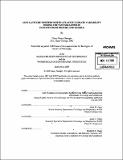| dc.contributor.advisor | Delia W. Oppo and Anne L. Cohen. | en_US |
| dc.contributor.author | Saenger, Casey Pearce | en_US |
| dc.contributor.other | Woods Hole Oceanographic Institution. | en_US |
| dc.date.accessioned | 2010-05-25T20:56:13Z | |
| dc.date.available | 2010-05-25T20:56:13Z | |
| dc.date.copyright | 2009 | en_US |
| dc.date.issued | 2009 | en_US |
| dc.identifier.uri | http://hdl.handle.net/1721.1/55163 | |
| dc.description | Thesis (Ph.D.)--Joint Program in Oceanography/Applied Ocean Science and Engineering (Massachusetts Institute of Technology, Dept. of Earth, Atmospheric, and Planetary Sciences; and the Woods Hole Oceanographic Institution), 2009. | en_US |
| dc.description | Cataloged from PDF version of thesis. | en_US |
| dc.description | Includes bibliographical references (p. 59-65). | en_US |
| dc.description.abstract | Estimates of natural climate variability during the past millennium provide a frame of reference in which to assess the significance of recent changes. This thesis investigates new methods of reconstructing low-latitude sea surface temperature (SST) and hydrography, and combines these methods with traditional techniques to improve the present understanding of western North Atlantic climate variability. A new strontium/calcium (Sr/Ca) - SST calibration is derived for Atlantic Montastrea corals. This calibration shows that Montastrea Sr/Ca is a promising SST proxy if the effect of coral growth is considered. Further analyses of coral growth using Computed Axial Tomography (CAT) imaging indicate growth in Siderastrea corals varies inversely with SST on interannual timescales. A 440-year reconstruction of low-latitude western North Atlantic SST based on this relationship suggests the largest cooling of the last few centuries occurred from -1650-1730 A.D., and was -I°C cooler than today. Sporadic multidecadal variability in this record is inconsistent with evidence for a persistent 65-80 year North Atlantic SST oscillation. Volcanic and anthropogenic radiative forcing are identified as important sources of externally-forced SST variability, with the latter accounting for most of the 20th century warming trend. An 1800-year reconstruction of SST and hydrography near the Gulf Stream also suggests SSTs remained within about I°C of modern values. This cooling is small relative to other regional proxy records and may reflect the influence of internal oceanic and atmospheric circulation. | en_US |
| dc.description.abstract | (cont.) Simulations with an atmospheric general circulation model (AGCM) indicate that the magnitude of cooling estimated by proxy records is consistent with tropical hydrologic proxy records. | en_US |
| dc.description.statementofresponsibility | by Casey Pearce Saenger. | en_US |
| dc.format.extent | 134 p. | en_US |
| dc.language.iso | eng | en_US |
| dc.publisher | Massachusetts Institute of Technology | en_US |
| dc.rights | M.I.T. theses are protected by
copyright. They may be viewed from this source for any purpose, but
reproduction or distribution in any format is prohibited without written
permission. See provided URL for inquiries about permission. | en_US |
| dc.rights.uri | http://dspace.mit.edu/handle/1721.1/7582 | en_US |
| dc.subject | /Woods Hole Oceanographic Institution. Joint Program in Oceanography/Applied Ocean Science and Engineering. | en_US |
| dc.subject | Earth, Atmospheric, and Planetary Sciences. | en_US |
| dc.subject | Woods Hole Oceanographic Institution. | en_US |
| dc.subject.lcsh | Ocean-atmosphere interaction | en_US |
| dc.subject.lcsh | Climatic changes | en_US |
| dc.title | Low-latitude Western North Atlantic climate variability during the past millennium : insights from proxies and models | en_US |
| dc.type | Thesis | en_US |
| dc.description.degree | Ph.D. | en_US |
| dc.contributor.department | Joint Program in Oceanography/Applied Ocean Science and Engineering | en_US |
| dc.contributor.department | Woods Hole Oceanographic Institution | en_US |
| dc.contributor.department | Massachusetts Institute of Technology. Department of Earth, Atmospheric, and Planetary Sciences | |
| dc.identifier.oclc | 608048245 | en_US |
